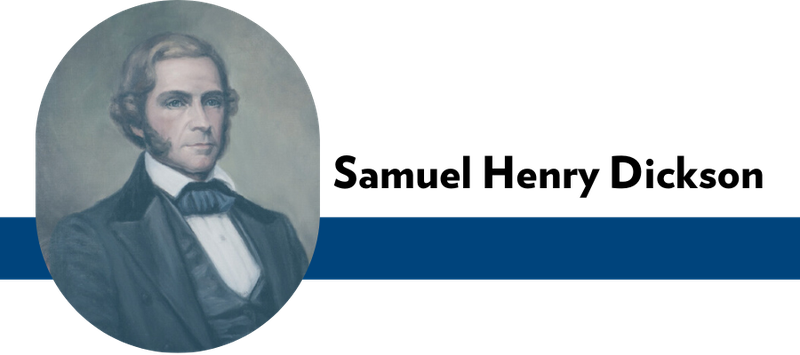
<br/>
<br/>
Samuel Henry Dickson, Professor of Practice & Institutes of Physic
<br/>

Dickson was heavily involved in the establishment of the Medical School of South Carolina. Deeply moved by Cooper’s address in 1821, he was at the forefront of local physicians who thought Charleston was the ideal location for such a school. His impassioned speeches to the Medical Society were delivered with urgency, and he served on numerous committees that ultimately decided the faculty, course of study, and graduation requirements of the school.
<br/>
In April 1824, he was unanimously elected the first Professor of Institutes and Practice of Physic at the Medical College of South Carolina. He, along with the rest of the faculty, resigned his position on faculty in 1832 and helped to establish the Medical College of the State of South Carolina, where he resumed the same professorship as before. There, he was elected dean for the 1834-1835 academic year. He taught at the medical college in Charleston until 1847, when he accepted an appointment as Professor of the Practice of Medicine at the University of New York. He returned to Charleston in 1850, where he once again resumed his position at the medical college. Finally, upon invitation to teach at the Jefferson Medical College in Philadelphia, Dickson sold most of his property in Charleston, retaining only one house and six enslaved persons. He taught at Jefferson until his death on March 31, 1872, and is buried at Woodlands Cemetery.
<br/>
Dickson was a prolific writer. His works include
On Dengue (1839),
On the Influence of Climate (1845),
Remarks on Certain Topics Connected with the General Subject of Slavery (1845),
Essays on Life, Sleep, Pain, Etc. (1852), and, his largest work,
Elements of Medicine (1855). He was a prominent believer in polygenesis, or the separate evolution of races, and that Africans were particularly suited to both slavery and the Southern environment.
<br/>
(Image description: Henry Dickson's handwritten job application to attend the Medical College. Waring Historical Library, Manuscript Collections,
MSS 12, S. Henry Dickson Application, 1824
.)
